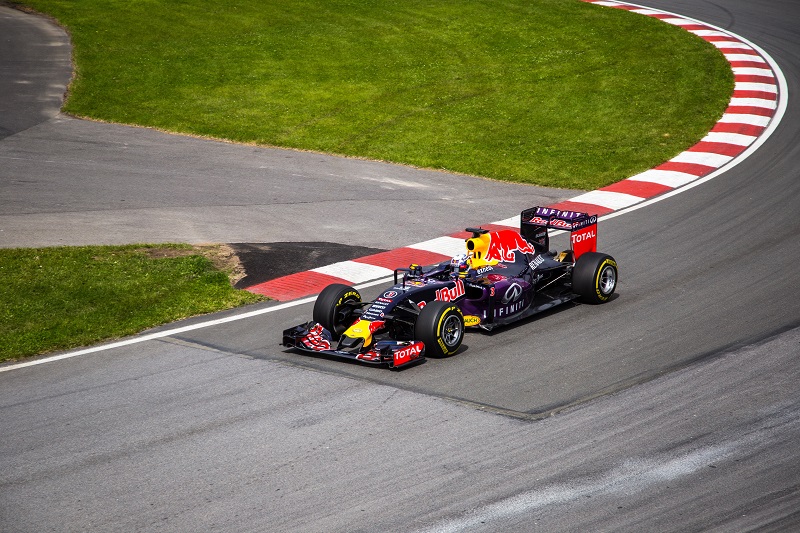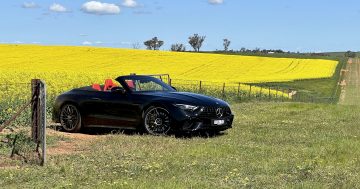
Most of us like to think we’re pretty slick on the roads, but there’s plenty of evidence out there to suggest quite a few of us are wrong.
You can’t control what others do on the road, but you can absolutely control what happens inside the cabin of your own vehicle.
Learning some more advanced driving techniques can not only help ensure a safer and more comfortable journey – it’s actually a lot of fun to test and challenge your skills.
Here are a few suggestions for more sophisticated driving techniques to try on your next quiet stretch of road. Do just be careful, and don’t allow yourself to be distracted from your driving.
Keep your hands at 9 and 3

When we’re talking about placing your hands on the steering wheel, we refer to the wheel as though it’s a clock face.
Your hands should be positioned where the 9 and 3 would be on the clock.
If you’re beyond a certain age, you might recall that we were once advised to place our hands higher at 10 and 2; but as our cars and steering wheels have changed, so have the guidelines.
Experts now say the most comfortable and effective hand position is 9 and 3, or you can go even lower, to 8 and 4.
Modern power steering also means you shouldn’t even need to shuffle your hands to navigate the average corner. The more your hands can stay on the wheel, the better – so this is a good one to try.
Give it a go, see if you can turn using the wheel and without moving your hands.
Aim high
Highly skilled drivers know to look much further down the road than the car in front.
Be aware of your immediate environment, sure, but you’ll have a better chance of avoiding any issues if you can see what’s coming up, sooner.
So next time you jump into the driver’s seat, check your posture – make sure you’re sitting up straight, with your head and eyes held high.
Zipper merge like a boss

The NRMA found Commonwealth Avenue, Canberra Avenue and Belconnen Way to be our three worst hotspots for merging-related accidents.
(Commonwealth Avenue is also exactly where I had my only serious car accident to date)
Most of us know how we *should* merge – but changing traffic conditions, distractions, and other drivers’ behaviour result in plenty of delays, accidents and road rage incidents.
You don’t want to cut in two early (lineupping), nor do you want to push ahead and push your luck just to make up a few spots (sidezooming).
Poor merging consistently rates high on the list of annoying driving behaviours, so pulling off the perfect ‘zipper merge’ is a good skill to master.
Make sure you have a safe opportunity and a bit of room.
As you approach the merge, look a few cars ahead as well as at the lane you’re merging into, and pick your spot.
The most efficient zipper merge results when people simply take turns, one for one, so shoot for this.
Then – and this is important – try to get your car up to speed with the existing traffic. Unless you have an obstacle in front of you, be confident and don’t slow down.
The reason merging is so problematic is because there is a lot to think about and be aware of.
But see just how smooth a merge you can pull off, and then pat yourself on the back for being one of approximately 5 drivers on our roads who can do this well.
Braking like a pro

The best indication of a really good driver is not how they brake, but how often they don’t brake.
Braking hard or often is bad for your car, bad for fuel efficiency, annoying to other drivers and uncomfortable for your passengers.
If you’re scanning the road well to see what’s coming up and using all the other tools you have to manage your speed (less acceleration, gears changes, etc), you should only need to drop the anchor in emergencies and when you actually have to come to a stop.
But when you do, you’ll want to use ‘limo braking’ (gentle stop) rather than ‘taxi braking’ (sharp stop).
If you had a good instructor, you should’ve learned this technique when you learned to drive.
Or otherwise, there’s a good chance you’ve instinctively picked it up along the way.
What you’re trying to do is avoid the inertia, that throws you and your passengers forward as you slow down, then back as you actually stop.
If the nose of your car is dipping as you brake, you’re braking too hard (except in an emergency, of course).
The trick is to apply gentle and even pressure to the brake pedal, then when you’ve almost stopped, let up on the brake a little, so the car almost rolls to a gentle halt.
Finding your A-line

Variously called the A-Line, Apex Line or Racing Line, this refers to the ideal path through a corner – it’s the fastest and most efficient, and the one that lets you limit turning, maximise speed and comfort, maintain grip and minimise braking.
It’s fun to practise on your own, but use with great caution when there are other vehicles around, as this technique involves using as much of the road as possible.
Essentially you want to drive as smoothly and as straight(ly?) through the corner as possible.
There are plenty of good instructions on the internet that we don’t need to recreate here, but basically you want to start as wide as possible, cut in close to the inside of the corner, and then finish as wide as possible.
Remember: outside, inside, outside.
Settle down to watch a few rounds of the F1 or Supercars closely to see how it’s done.
Heel and toe, heel and toe…
I remember learning to dance the Heel-and-Toe Polka in about Year Six – are kids today still put through this torture?
When it comes to driving, however, the aim of the heel-and-toe shift is actually to avoid all the sliding and skipping about, while minimising the drop-off in revs when you change down gears.
Manual drivers, this one is for you, as this great video explains, the technique actually emerged to address the issue in older (manual) cars, where the three pedals were much further apart.
While this is rarely a problem in our modern vehicles, it’s still a handy skill to learn, to move your foot from the brake back to the throttle as quickly, smoothly and safely as possible.
Starting with your foot up nice and high on the pedal, you’re basically using your toe to manage the brake, and your heel to manage the accelerator.
Once you get your head around the idea of having the same foot on both the accelerator and brake at the same time, the key is to learn how to keep both the brake pressure and the clutch release nice and smooth.
Step it up with left-foot braking

If you want to feel like a racing or rally car driver, left-foot braking is one to conquer – but take note: this one is going to be very difficult to manage, and to manage smoothly.
Make sure you practise in a large, safe, clear area, and even then, you might want to keep it for off-road driving.
That’s because you’re going to be fighting against years of training and habit when you start using your right foot for the accelerator and your left foot on the brake.
That’s right, Lefty no longer sits to the side being useless, or waiting for the chance to use the clutch if you’re driving a manual transmission.
In theory, this should give you more stability and control, as your right foot remains dedicated to the throttle.
As with the steering, the less you have to move your limbs about, the better.
In reality, and as you practice, get ready for lots of really sharp and uncomfortable stops as you learn the balance, and to not push down too hard on the brake.
Over to you – any advanced driving techniques that I’ve missed? What works – and doesn’t work – for you?


















